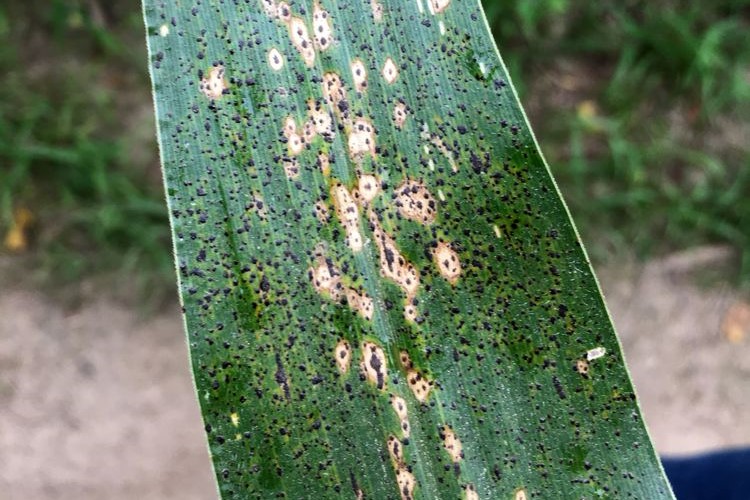MSU receives $590K USDA grant for corn tar spot resistance research
Addie Thompson, an assistant professor of maize genetics and genomics, leads the project.

EAST LANSING, Mich. — A team of Michigan State University scientists has received more than $590,000 from the U.S. Department of Agriculture’s National Institute of Food and Agriculture to study resistance to tar spot, a devastating corn disease.
The project is led by Addie Thompson, an assistant professor of maize genetics and genomics in the Department of Plant, Soil and Microbial Sciences.
A fungal disease exacerbated by humid and wet conditions, tar spot was limited to Central and South America prior to 2015. Since then, however, the pathogen has swiftly spread across the U.S., confirmed in 10 states and Ontario, Canada, with the potential to further expand its reach.
Tar spot presents as small, black lesions on upper and lower leaf surfaces that work quickly to degrade plant tissue. According to previous studies, the disease can rapidly multiply — from a few specks on one plant to encompassing an entire field in less than three weeks.
Thompson said corn growers often use fungicides to control other fungal diseases, but they are expensive and do not prevent tar spot, only slowing its proliferation once already present. Data is also lacking on the most prudent timing for fungicide application.
Additionally, resistant varieties from tropical areas are poorly adapted to growing conditions in the U.S., and the mechanisms of resistance are still largely a mystery. Advancing knowledge in this area is crucial to developing high-performing, resistant hybrids.
“Many Michigan corn growers have seen significant yield loss due to tar spot, so it’s important for the health of the industry to learn more about how we can prevent the disease as well as treat it,” said Thompson, whose work is also supported by MSU AgBioResearch. “We need to better understand the mechanisms of resistance in order to prevent future yield losses.”

For this project, Thompson and her team will characterize the phenolic compounds that accumulate in corn in response to tar spot infection. Phenolic compounds are essential to plants’ defense from pests and diseases. Researchers will then test and validate previously identified resistance genes.
Using this information, along with remote sensing data collected through multispectral and hyperspectral imaging, the group will create predictive models on tar spot severity and the relationship to phenolic compound accumulation. This can ideally help detect early onset of the disease.
Thompson said this multi-modal approach will speed up the discovery of resistance traits that can be used to develop highly resistant corn varieties.
“Understanding the relationship between compound accumulation and resistance will enable development of new varieties of corn that are less reliant on pesticides,” Thompson said. “Results will be highly applicable to breeders and growers, which is why this project is innovative and timely as this new disease spreads at alarming rates each year throughout the upper Midwest.”
The research team also includes:
- Erich Grotewold, professor and chair in the Department of Biochemistry and Molecular Biology, who specializes in phenolic biochemistry and molecular genetics.
- Martin Chilvers, associate professor in the Department of Plant, Soil and Microbial Sciences, and pathologist.
- Erin Bunting, assistant professor in the MSU Department of Geography, Environment and Spatial Sciences and the director of Remote Sensing and Geographic Information Systems Research and Outreach Services.
- Jessica Miesel, associate professor in the Department of Plant, Soil and Microbial Sciences, and ecosystems ecologist with expertise in spectral biology.
The project builds on previous USDA-funded work, the Great Lakes Tar Spot Initiative. This multi-state effort included partners at Purdue University and the University of Wisconsin.
“We’re thrilled by the continuity of funding from USDA to address this urgent challenge,” Thompson said. “We’re committed to helping growers across the country boost yields and profitability, as well as improving food security by protecting one of our nation’s staple crops.”



 Print
Print Email
Email




